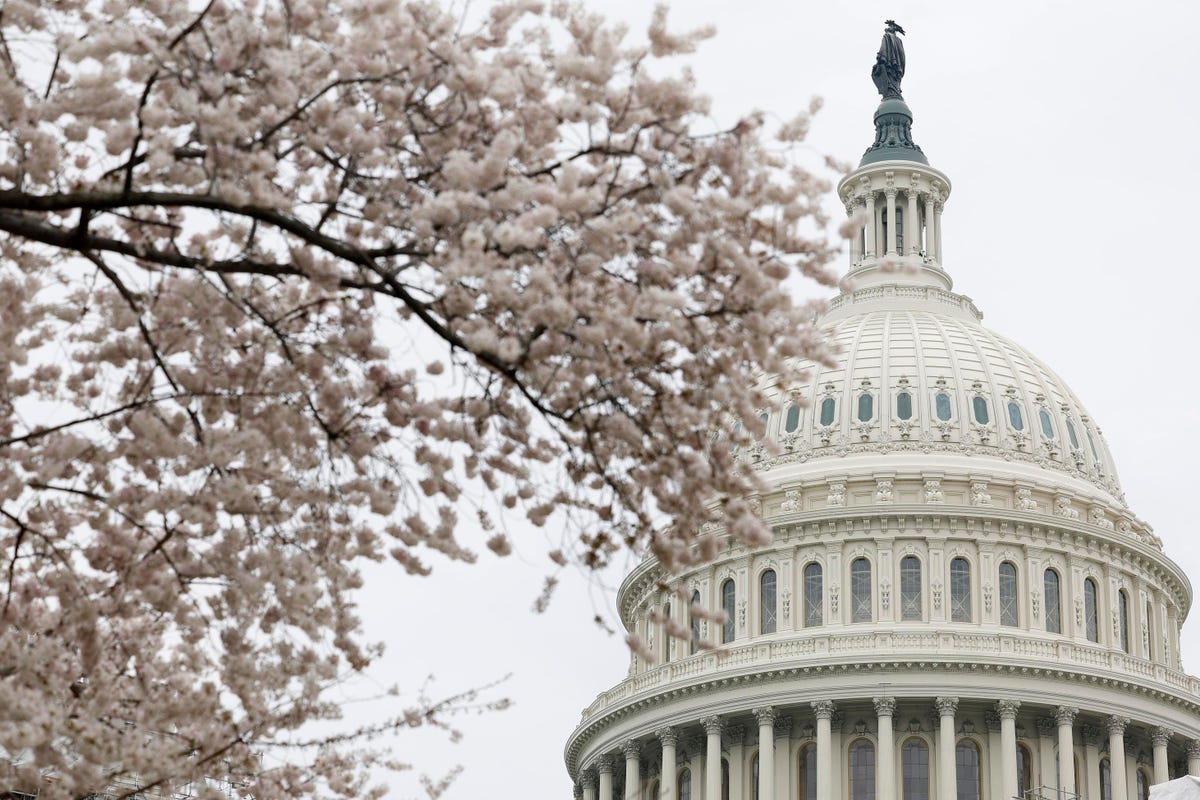Few things herald the coming of spring in the United States like the blooming of the cherry blossom trees around the Tidal Basin in Washington, D.C.
Although the National Park Service has deemed March 23, 2023, as “peak bloom” for the blossoms, March 27 is a bit more significant: It was on this day in 1912 that Helen Taft, wife of President William Taft, and the Viscountess Chinda, wife of the Japanese ambassador, planted two Yoshino cherry trees on the northern bank of the Potomac River near the Jefferson Memorial. The event was meant to celebrate what we become an iconic gift from the Japanese government of 3,020 cherry trees to the U.S. government.
D.C. Cherry Blossom Tree History
This wasn’t the first significant appearance of Japanese cherry trees in D.C. In January 1910, 2,000 trees arrived from Japan, but they were infested with insects and nematodes, and were diseased. As a result, they had to be destroyed.
The mayor of Tokyo, Yukio Ozaki, and others suggested a second donation, and those were shipped out in 1912. Of the 3,020 trees, more than half were Yoshino cherry trees. Two were planted along the Tidal Basin in a formal ceremony, while the rest were homed along the basin, in East Potomac Park, and on the White House grounds.
The trees proved to be very popular with visitors, who flocked to see the pink and white blossoms. In 1935, D.C. celebrated its first “Cherry Blossom Festival” which eventually became an annual event.
After World War II, the famed cherry tree grove along the Arakawa River near Tokyo—the parent stock for Washington D.C.’s first trees—had fallen into disrepair. The National Park Service shipped budwood from descendants of those same trees back to Tokyo to help restore the original grove.
More than a decade later, in 1965, Japan would return the favor by gifting 3,800 Yoshino trees. First Lady Lady Bird Johnson, wife of President Lyndon Baines Johnson, and Ryuji Takeuchi, wife of Japan’s Ambassador, reenacted the famous planting ceremony of 1912. Many of these trees were planted on the grounds of the Washington Monument.
Today, the cherry blossom trees are a symbol of continued friendship between the two countries.
Caring For The Trees
To ensure the health of the trees, the National Mall and Memorial Parks (NAMA) Division of the National Park Service employees a small team. They work to care not only for the nearly 4,000 cherry blossom trees, but also the more than 20,000+ trees on the 1,100 acres making up National Mall and Memorial Parks.
National Park Service
The National Park Service was created by the Organic Act of 1916 “to conserve the scenery and the natural and historic objects and the wildlife therein and to provide for the enjoyment of the same in such manner and by such means as will leave them unimpaired for the enjoyment of future generations.”
The NPS covers over 85 million acres, including 136 historical parks or sites, 84 national monuments, 63 national parks, 31 national memorials, 25 battlefields or military parks, and 84 otherwise designated national park units. In 2021, 297 million visitors stopped by an NPS site. Before Covid, park visitation routinely exceeded 300 million.
Funding
The NPS is primarily funded by Congress—in 2023, the budget request was for $3 .1 billion for operations of the national park system. The agency also receives funding through park entrance, user fees, and private philanthropy.
One of those philanthropic sources is the Trust for the National Mall, the non-profit partner of the National Park Service on the National Mall. According to Julie Moore, Vice President of Communications for Trust for the National Mall, their mission is to help restore, preserve, and enrich the National Mall. Preserving and protecting the 3,700 cherry trees on the National Mall is an essential part of that work and mission.
The Trust is currently raising money through its Adopt-A-Cherry Tree program. The program is the primary source of private funding for the care and maintenance of the cherry trees. According to Moore, it costs approximately $1,000 to endow a tree throughout its lifetime, including acquiring and planting a young sapling, pruning, feeding, and watering.
Today, the famed cherry blossom trees are facing challenges, including a changing climate and advanced age—remember, they’re more than 100 years old. And with more than 1.5 million visitors breezing by the trees each year, celebrating the springtime blooms has become a tradition in the nation’s capital.
(Can’t make it to D.C.? You can keep tabs on the trees via the Bloomcam. Full disclosure: It’s addictive.)
The Trust has set a goal of raising $3.7 million to protect the cherry trees on the National Mall. So far, they’ve raised nearly $500,000 to plant new saplings and care for the trees. The aim, says Moore, is to make sure the iconic cherry trees bloom for generations to come.
Read the full article here









